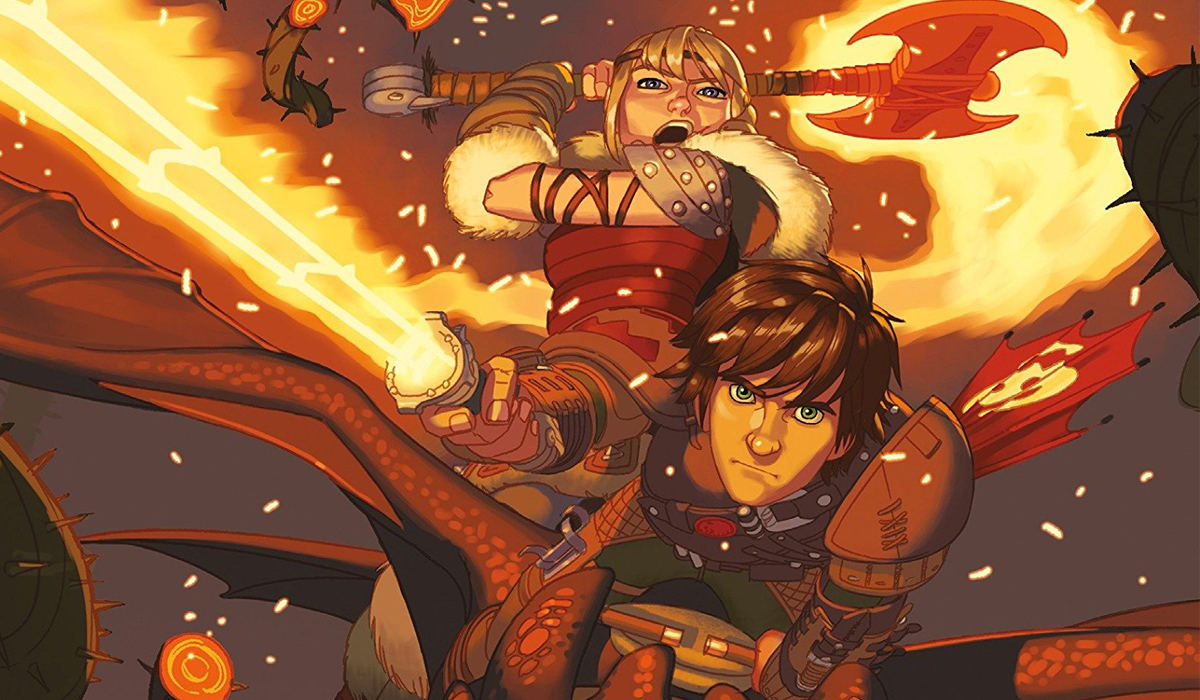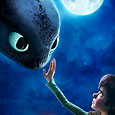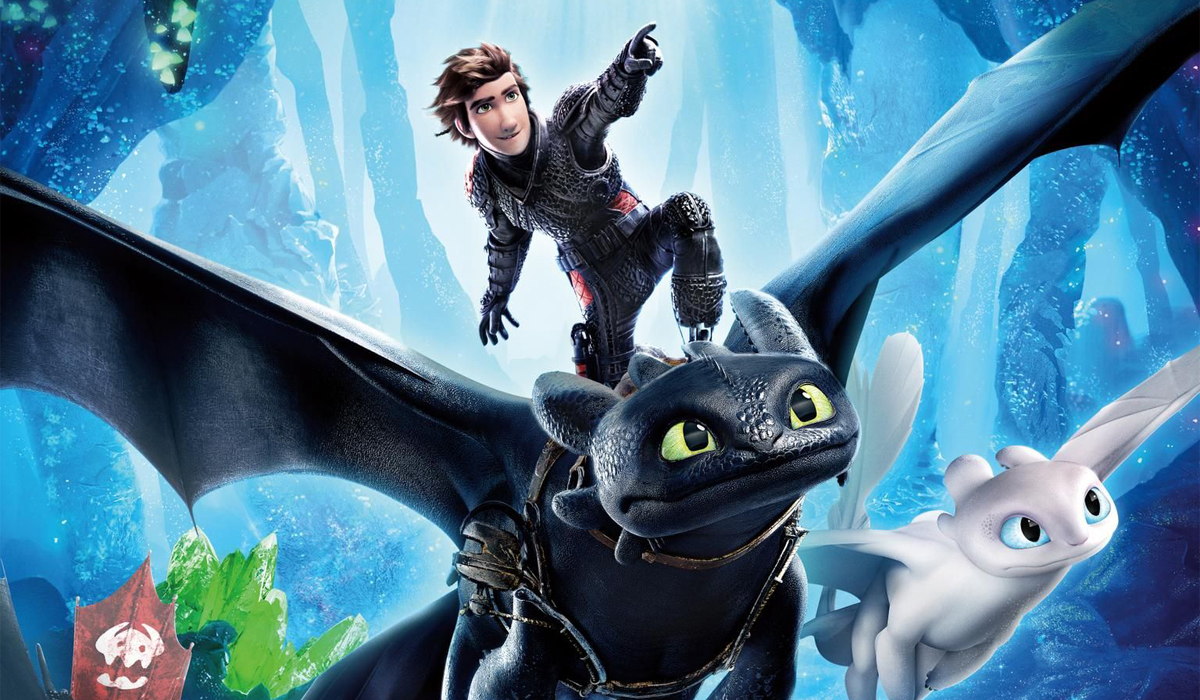 Written by Dean DeBlois and Richard Hamilton
Written by Dean DeBlois and Richard Hamilton
Illustrated by Doug Wheatley and Francisco de la Fuente
Dark Horse Comics
August 22, 2018
Softcover, 88 pages
$10.99
At the 2015 New York Comic Con, it was announced that DreamWorks Animation had entered into an agreement for Dark Horse Comics to publish three graphic novels set in the How to Train Your Dragon franchise. While the series is no stranger to comics, having had books published by Titan Comics that tie in with the television series first two seasons Riders of Berk and Defenders of Berk, these would tell of adventures taking place between the second film and the forthcoming third film. What’s more, the books would be co-written by the films’ writer/director Dean DeBlois.
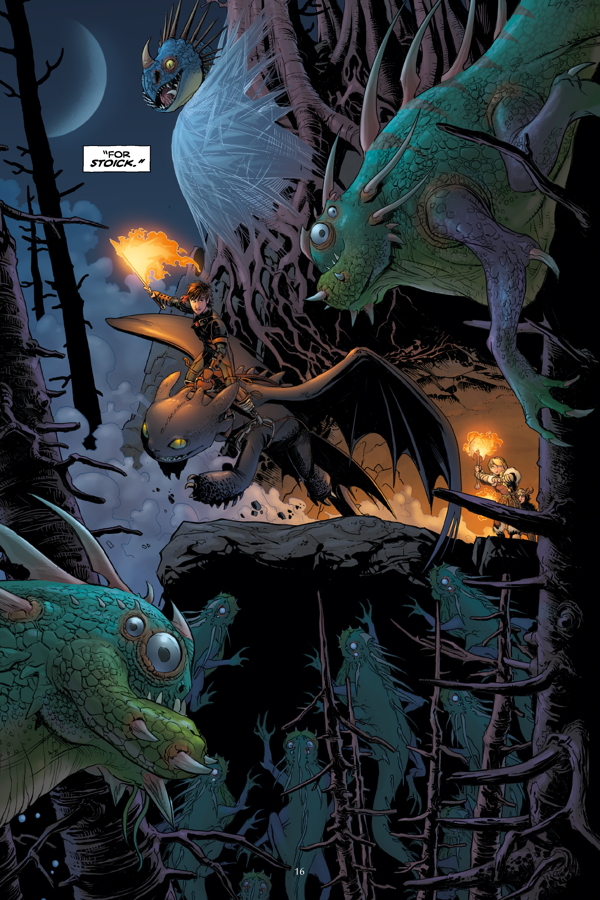
Dragonvine is the second of the three graphic novels. As the books are intended to stand alone from one another, it’s not a prerequisite to read the first book The Serpent’s Heir. Dragonvine does feature in its entirety Burning Midnight, a 10-page story that was published on Free Comic Book Day in 2016, where Hiccup and the other Dragon Riders tell of fond memories of Stoick while shutting themselves in an empty cave. They are buying time for Toothless to gather his strength before tackling a new species dubbed Silkspanners.
The book proper then picks up right from where Burning Midnight ends as they fight off the Silkspanners to free the rest of their dragons from webbed captivity. When the group is able to ease the situation, Hiccup discovers a Dragon Hunter arrow. Believing they were responsible for riling up the Silkspanners to attack humans and dragons, he sets off to investigate with most of the group in tow. They find themselves arriving on an island that appears to be overgrown with Dragonvine. Previously thought to be myth, Eret confirms that they are poisonous to humans and deadly to dragons.
Co-writing the books with DeBlois is Richard Hamilton, who served as the director’s writing assistant on the second film. The pair develop a pretty good story that reads well and is able to work within how comic books and graphic novels are presented in comparison to how one is presented in the films or even the television series. It does come off like a two-episode arc for the television series in some respects. This seems to be the case through the last several pages as I think they were being forced to wrap things up quickly, leaving areas to end up feeling like they’re not fleshed out or further explained upon.
But also like the television series, on which Hamilton was a staff writer, this books ends up being an opportunity for a supporting character in the series to get a little bit of the spotlight. Perhaps surprisingly, Dragonvine sees Eret get that spotlight. The story shows him as a skilled adventurer as well as displaying some leadership qualities. We still see Hiccup at the center for the most part and the other characters do get a little more to do than I believe they did in the first book. But it’s very nice to see Eret showcased.
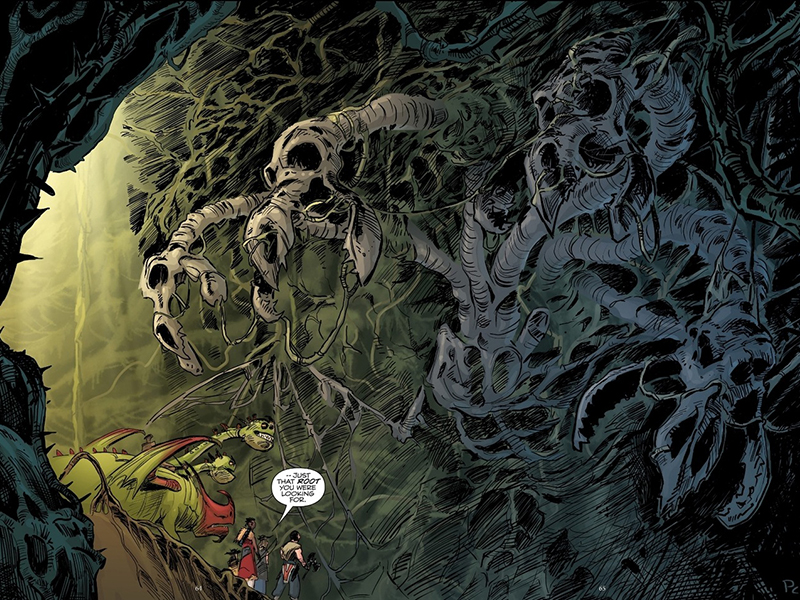
The Burning Midnight story was illustrated by Doug Wheatley while the remainder of Dragonvine is illustrated by Francisco de la Fuente. There is a noticeable difference in the design style between the two artists, which can be a little distracting. The most notable is in presentation. Wheatley seems to be illustrating in restraint, having to work with a number of panels per page and figuring how much he can illustrate within those panels. On the other hand, de la Fuente seems to want each page to be dynamic and manages to figure a way to manipulate whatever number of panels he has to work with into creating a full page that has the reader engaged.
I will say that de la Fuente does get rather inconsistent with how he illustrates character faces. There are a couple panels where the characters look nothing like they did in the last page. It slightly adds to the distraction. Fortunately, the fine coloring job by Wes Dzioba provides some visual fluidity. The colors do a fine job setting the atmosphere of the scene as well as masking some of the occasional differences in the drawing styles. The one thing that does work out quite well in the books is the way the dragons are visualized. Both Wheatley and de la Fuente do a nice job in maintaining the way the dragons look in the films while also being able to inject their own styles here and there.

How to Train Your Dragon: Dragonvine offers just enough to whet the appetites of fans while waiting for the release of The Hidden World. At 88 pages, it may seem a little short and the last several pages do feel like the creators had to rush. And while the differing art styles between the reprinting of Burning Midnight to the story proper may distract a little, the overall presentation of the book is pretty good. DeBlois and Hamilton develop a very nice story, Eret gets some spotlight time, and the full visualization of the illustrations are vibrant. I don’t think it’s a book fans should go out of their way to pick up. However, I do think it’s good enough to get if a nice opportunity presents itself to do so.


